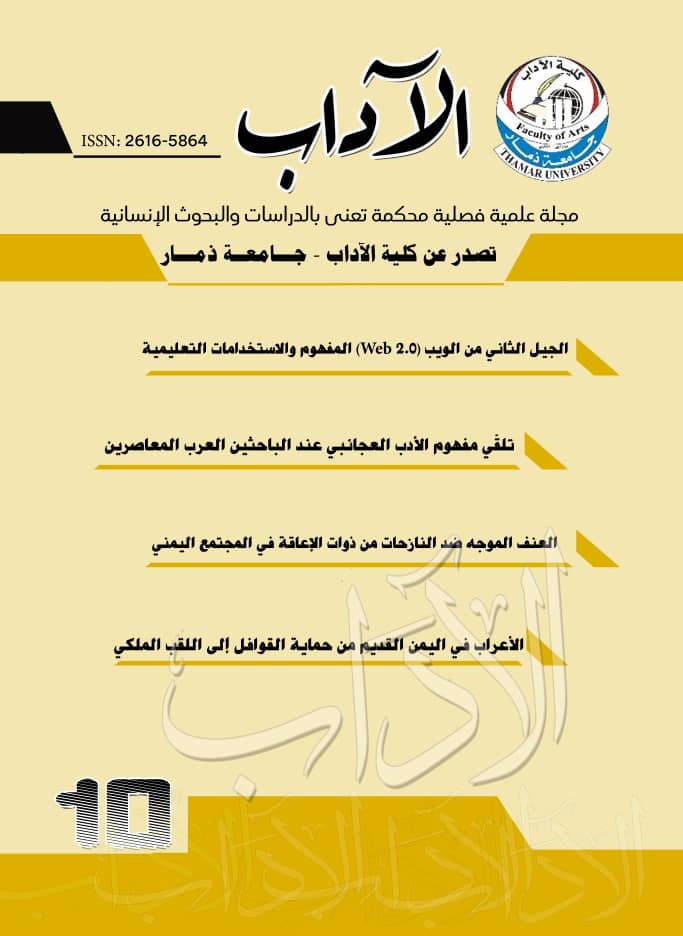Violence against Displaced Women with Disabilities in the Yemeni Society
DOI:
https://doi.org/10.35696/.v1i10.599Keywords:
Violence, Displacement, Disability, Yemeni societyAbstract
This study aimed to identify the level of violence directed towards displaced women with disabilities in the Yemeni society. It also identifies the most common types of violence among displaced women, highlighting the differences in the level of violence directed against them according to a number of variables (age, marital status, size of the family, the governorate to which they were displaced). The sample consisted of (280) displaced women with disabilities in five governorates: Hodeida, Ibb, Dhala, Amran and Sana'a (the Capital City). A set of tools were developed including: violence scale, personal interview and observation). To achieve the study objectives, a number of statistical methods were used such as means, standard deviations, frequencies and percentages, T-test, and mono-variance analysis. One of the main findings of the study was that the violence directed towards displaced women with disabilities in the Yemeni society was of a medium level, and the most common violence among displaced women with disabilities in the Yemeni society was the psychological one. There were no statistically significant differences in the level of violence directed against the displaced women according to the variables mentioned in the third objective. It was found that the displaced women faced many psychological and social problems such as: introversion and isolation, feelings of inferiority, lack of self-confidence and in others, fear of the unknown, etc. It was realized that the displaced women with disabilities were in urgent need for shelter, food, drink, clothing, and safe places to refuge to in the midst of the war time.Downloads
Downloads
Published
How to Cite
Issue
Section
License
Copyright (c) 2021 علي سعيد الطارق، لطف محمد حريش، عباس صالح مسعد العزب، خديجة علي عمر (مؤلف)

This work is licensed under a Creative Commons Attribution 4.0 International License.
Copyright and Licensing
For all articles published in journal, copyright is retained by the authors. Articles are licensed under an open access Creative Commons CC BY 4.0 license, meaning that anyone may download and read the paper for free. In addition, the article may be reused and quoted provided that the original published version is cited. These conditions allow for maximum use and exposure of the work.



